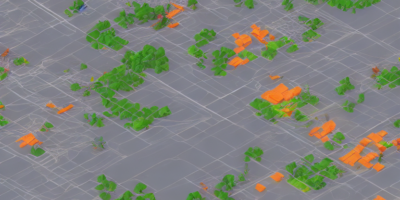In cognitive research, understanding how individuals perform tasks is crucial for gaining insights into brain function and development. One approach to tackling this challenge is by employing hierarchical Bayesian modeling (HDDM). In this article, we’ll delve into what HDDM entails, its advantages, and how it can help researchers better comprehend cognitive processes.
What is Hierarchical Bayesian Modeling?
Hierarchical Bayesian modeling is a statistical technique that enables researchers to account for inter-individual variability in cognitive tasks. It does this by constructing a hierarchical framework, where each subject is nested within a larger population. This approach allows researchers to estimate the posterior distribution of parameters rather than just a single value, providing insight into the uncertainty associated with these estimates.
Advantages of Hierarchical Bayesian Modeling
- Accounts for inter-individual variability: HDDM acknowledges that each person’s brain functions differently, which is crucial in cognitive research where individual differences are substantial.
- Provides uncertainty estimates: Unlike traditional diffusion models, HDDM offers insight into the parameters’ uncertainties, which is vital in understanding cognitive processes.
- Allows for modeling complex tasks: HDDM can handle diverse cognitive tasks by considering various parameters that vary between subjects. This complexity enables researchers to capture the intricacies of cognitive functions more accurately.
- Flexibility in model selection: Researchers can choose from seven variants of HDDM models, depending on their specific research goals and experimental design.
- Enhances interpretability: The use of a whole group distribution or random samples from larger populations enables researchers to comprehend how parameters relate to each other, facilitating more accurate interpretations of cognitive processes.
Applications of Hierarchical Bayesian Modeling in Cognitive Research: - Improving model fit: By accounting for inter-individual variability using HDDM, researchers can develop models that provide a better fit to their data.
- Investigating the effect of aging on cognition: HDDM enables researchers to examine how age affects cognitive function by comparing younger and older participants’ performance.
- Examining the impact of training on cognition: Researchers can assess how training influences cognitive abilities across various task levels using HDDM, which considers drift rates dependent on coherency and conditions.
Conclusion
In conclusion, hierarchical Bayesian modeling (HDDM) offers a powerful tool for cognitive research by accounting for inter-individual variability and providing uncertainty estimates. By leveraging HDDM, researchers can gain a deeper understanding of complex cognitive processes and their underlying mechanisms. As the field continues to evolve, we can expect even more innovative applications of this technique to emerge.



